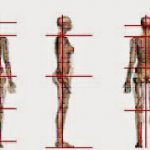Static Postural Assessments
Static posture define as how individuals physically present themselves in stance. It is reflected in the alignment of the body.
Posture can be thought of as static or dynamic. Static posture means how individuals physically present themselves in stance which could be considered the base from which an individual moves. It provides the foundation or the platform from which the extremity moves.
Dynamic posture is reflective of how an individual is able to maintain posture while performing functional tasks.
We will only discuss static posture here.
Systemic approach to assess static posture.
Static postural assessments require a strong visual observation skill from the clinicians. This can be developed with time and practice. Generally, and static postural assessments begin at the feet and travel upward toward the head. Clinicians should observe from anterior, posterior and Lateral view.
Basic check point of body region that needs to consider while assessment.
- Foot and ankle
- Knee
- Lumbo-pelvic-hip complex (LPHC)
- Shoulders
- Head/cervical spine

A static postural assessment is a simple yet effective tool to quickly “size up” your client. Consider yourself a detective looking for structural deviations within a kinetic chain. Many muscle imbalances can be easily identify from the deviations noted in the static postural assessment.
Using a static postural assessment on an initial evaluation of your client will give you a “big picture” view of how that individual uses his or her body day in and day out. Consider the body as a road map.
There are several questions in our mind that
- How have these alterations distorted the feedback from the proprioceptors?
- How has the altered alignment affected the function of the soft tissue?
- Has the fascia been overloaded?
- Have compensatory muscle imbalances been generated creating altered length-tension relationships, altered force production, synergistic dominance, and altered reciprocal inhibition relationships?
- How have these changes affected the entire kinetic chain and overall coordination of movement within the limbs and between the limbs and the trunk?
The static postural assessment is the first step in assessing the biomechanical and neuromuscular pieces of the puzzle necessary to create a program for functional re balancing for your client.
By looking on patient’s posture clinicians have easy to identify on Which muscle they have to work regarding condition. By looking from different view of standing position one should easly identify the over active and under active muscle group. These will help in clinicians to reach functional goal.
Coutrsey : corrective exercise essential : NASM




Leave a Reply
Want to join the discussion?Feel free to contribute!